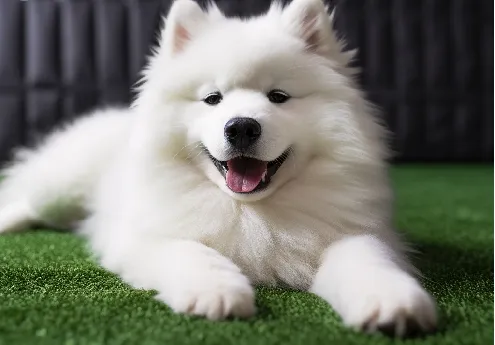Welcome to Hoyarn
Call Us Any Time:+86 19801805999
Email Us: info@hoyarn.cn

- Afrikaans
- Arabic
- Belarusian
- Bengali
- Czech
- Danish
- Dutch
- English
- Esperanto
- Estonian
- Finnish
- French
- German
- Greek
- Hindi
- Hungarian
- Icelandic
- Indonesian
- irish
- Italian
- Japanese
- kazakh
- Rwandese
- Korean
- Kyrgyz
- Lao
- Latin
- Latvian
- Malay
- Mongolian
- Myanmar
- Norwegian
- Persian
- Polish
- Portuguese
- Romanian
- Russian
- Serbian
- Spanish
- Swedish
- Tagalog
- Tajik
- Thai
- Turkish
- Turkmen
- Ukrainian
- Urdu
- Uighur
- Uzbek
- Vietnamese
Artificial Grass for Professional Sports Fields
Jan . 13, 2025 14:08 Back to list
Artificial Grass for Professional Sports Fields
Artificial turf lawns have evolved from being a novelty to a practical and sustainable option for homeowners and businesses worldwide. Their popularity has surged thanks to their low maintenance requirements, durability, and aesthetic appeal. In this article, we delve into the features, benefits, and considerations when choosing artificial turf lawns to provide you with an informed perspective grounded in expertise and credibility.
From an economic perspective, while the initial investment for artificial turf can be substantial, the long-term savings on water bills, lawn care equipment, and maintenance services quickly offset this cost. Users can expect a return on investment within a few years, alongside the priceless benefit of more free time that would otherwise be spent on lawn upkeep. For businesses, the pristine appearance of artificial turf can enhance customer perceptions and satisfaction, indirectly contributing to a positive bottom line. However, selecting the right artificial turf requires careful consideration. Users should evaluate factors such as pile height, density, and material quality. Higher pile heights offer a more lush appearance but may require additional infill for support. Density affects durability and comfort, with higher-density turfs offering more resistance to wear. Ensuring the turf is made from high-quality, non-toxic materials is crucial for safety, particularly in households with children and pets. Professional installation is key to maximizing the lifespan and performance of artificial turf. Experienced installers will ensure proper groundwork preparation, drainage solutions, and infill materials to create a stable, long-lasting surface. Poor installation can lead to issues such as uneven surfaces, inadequate drainage, and turf slippage, which can detract from the aesthetic and functional benefits. In sum, artificial turf lawns offer a compelling blend of aesthetic, environmental, and practical benefits backed by expert insights and authoritative endorsements. For those looking to adopt a sustainable and enduring landscaping solution, artificial turf presents a reliable choice that fits diverse needs and preferences. As you consider incorporating artificial turf into your property, you can trust that it provides not only an attractive solution but also aligns with modern ecological and economic goals.


From an economic perspective, while the initial investment for artificial turf can be substantial, the long-term savings on water bills, lawn care equipment, and maintenance services quickly offset this cost. Users can expect a return on investment within a few years, alongside the priceless benefit of more free time that would otherwise be spent on lawn upkeep. For businesses, the pristine appearance of artificial turf can enhance customer perceptions and satisfaction, indirectly contributing to a positive bottom line. However, selecting the right artificial turf requires careful consideration. Users should evaluate factors such as pile height, density, and material quality. Higher pile heights offer a more lush appearance but may require additional infill for support. Density affects durability and comfort, with higher-density turfs offering more resistance to wear. Ensuring the turf is made from high-quality, non-toxic materials is crucial for safety, particularly in households with children and pets. Professional installation is key to maximizing the lifespan and performance of artificial turf. Experienced installers will ensure proper groundwork preparation, drainage solutions, and infill materials to create a stable, long-lasting surface. Poor installation can lead to issues such as uneven surfaces, inadequate drainage, and turf slippage, which can detract from the aesthetic and functional benefits. In sum, artificial turf lawns offer a compelling blend of aesthetic, environmental, and practical benefits backed by expert insights and authoritative endorsements. For those looking to adopt a sustainable and enduring landscaping solution, artificial turf presents a reliable choice that fits diverse needs and preferences. As you consider incorporating artificial turf into your property, you can trust that it provides not only an attractive solution but also aligns with modern ecological and economic goals.
Latest news
-
The Benefits of Artificial Turf for Indoors
NewsJul.15,2025
-
How Artificial Grass Suppliers Ensure Quality Products
NewsJul.15,2025
-
Artificial Grass and Pets: A Space for Relaxation
NewsJul.08,2025
-
Balcony & Outdoor Decoration with Artificial Grass
NewsJul.08,2025
-
Best Indoor Artificial Grass for Home
NewsJul.07,2025
-
Best Pet Turf for Dogs: Safe & Durable Artificial Grass Options
NewsJul.07,2025
Products categories









